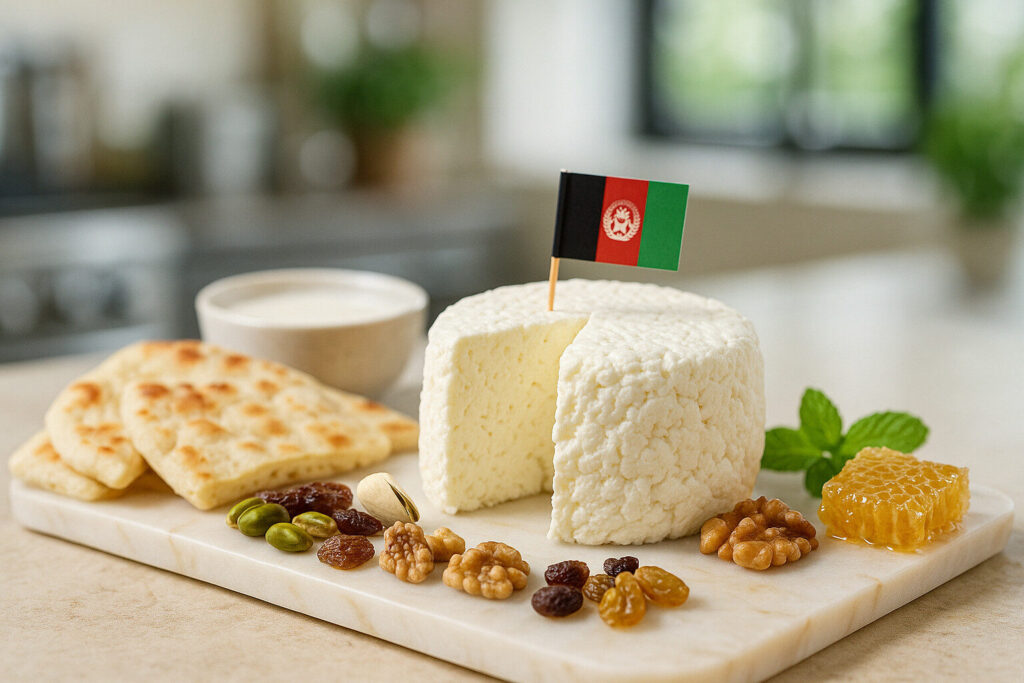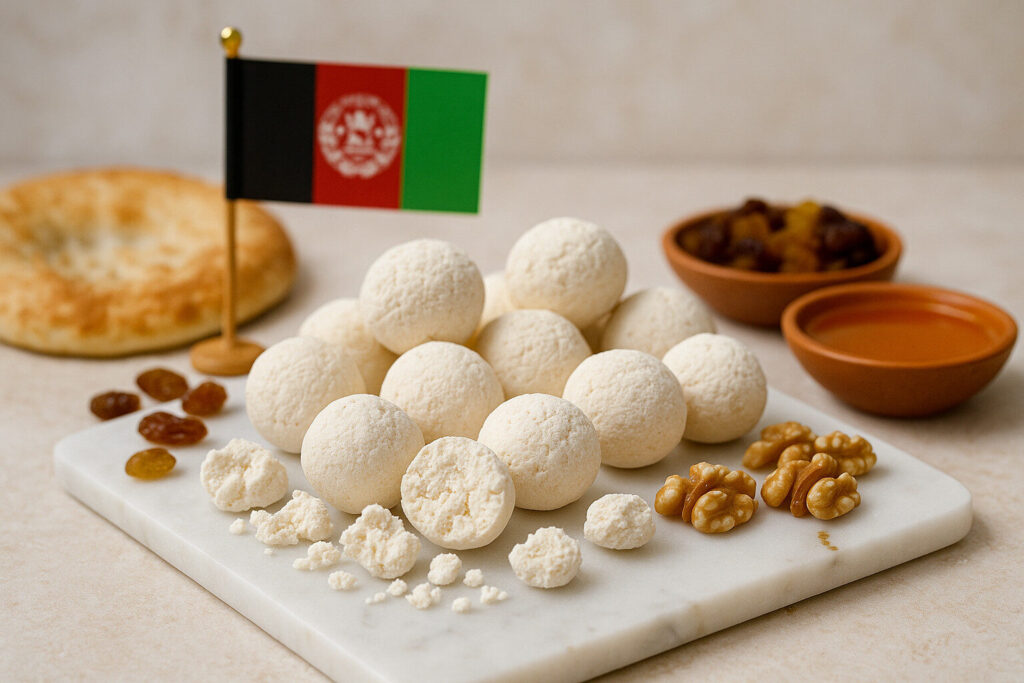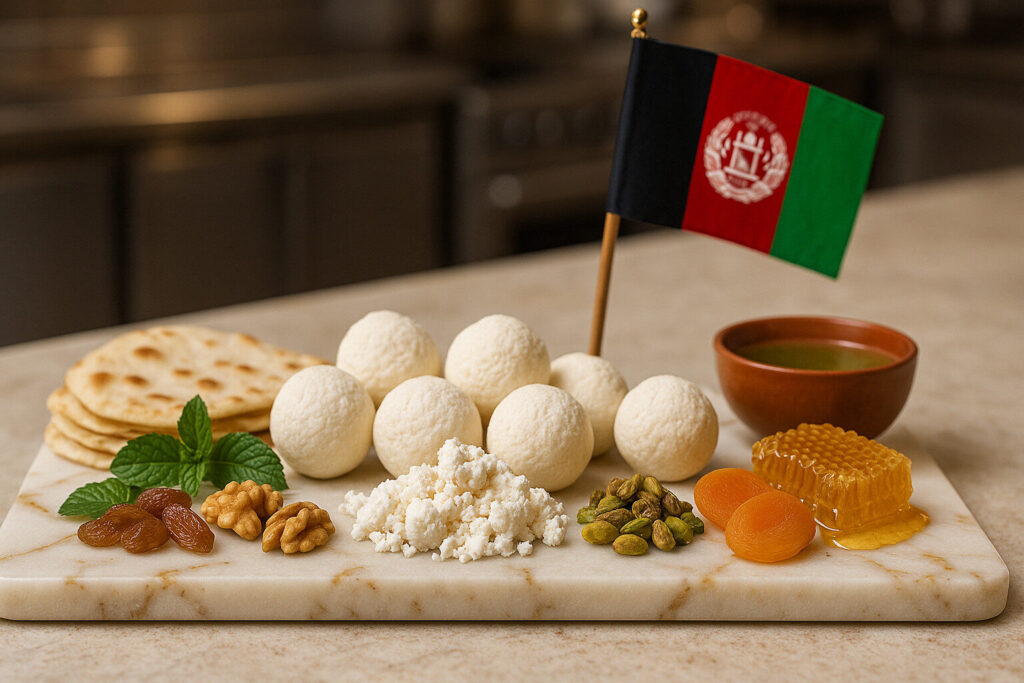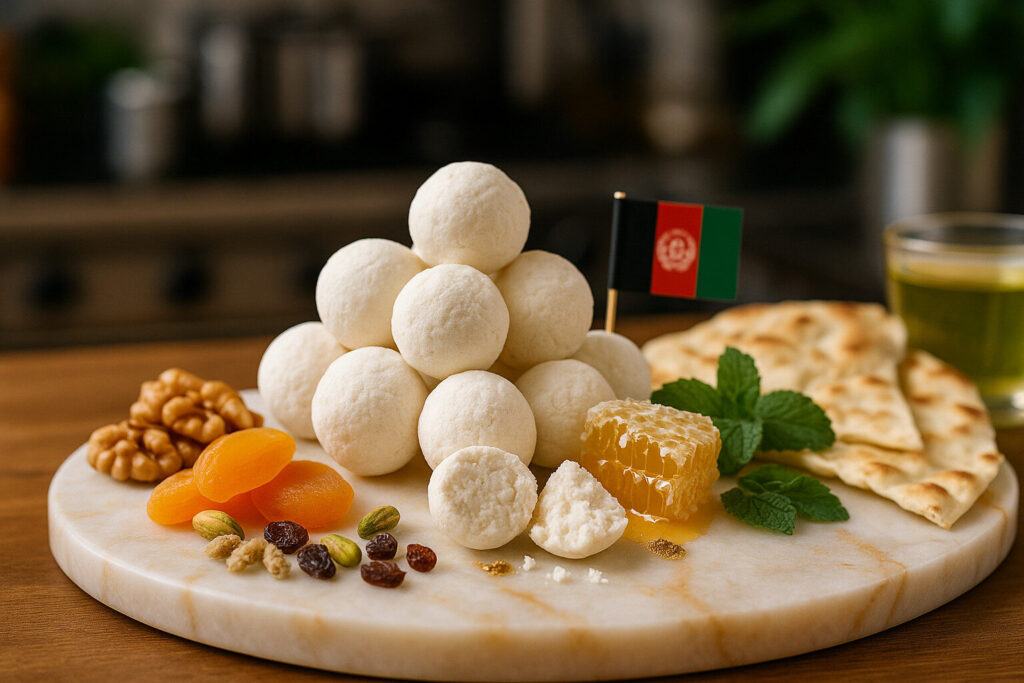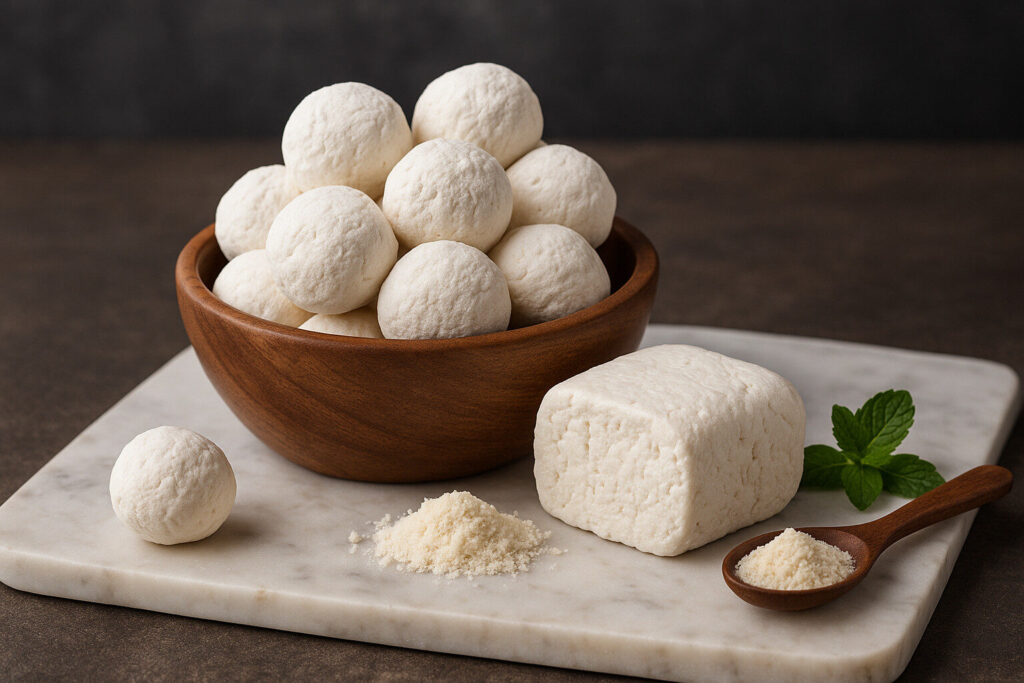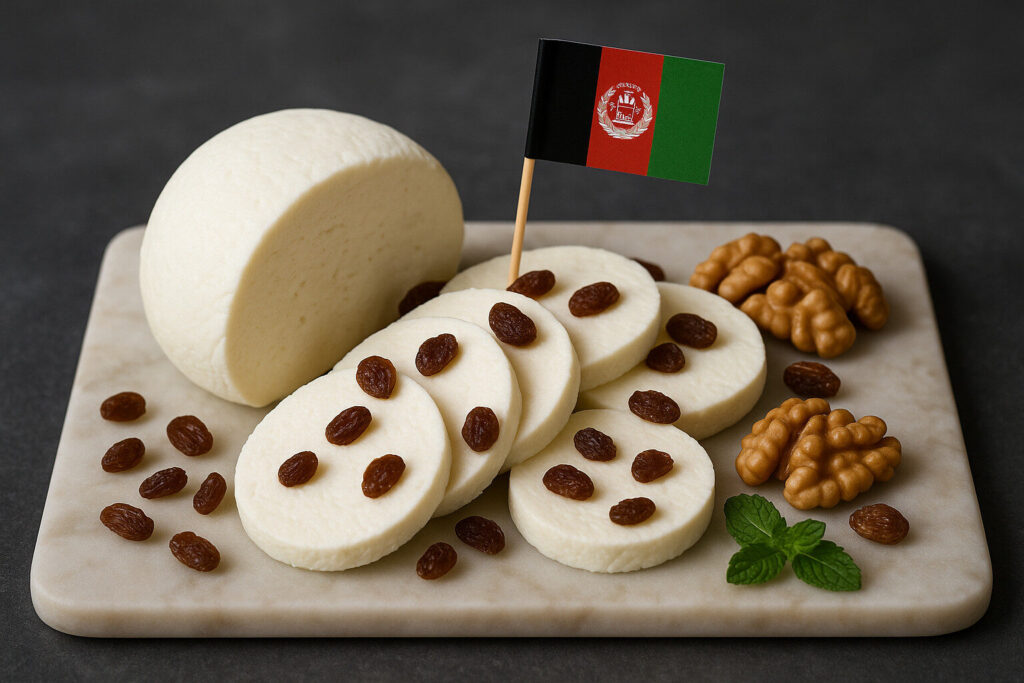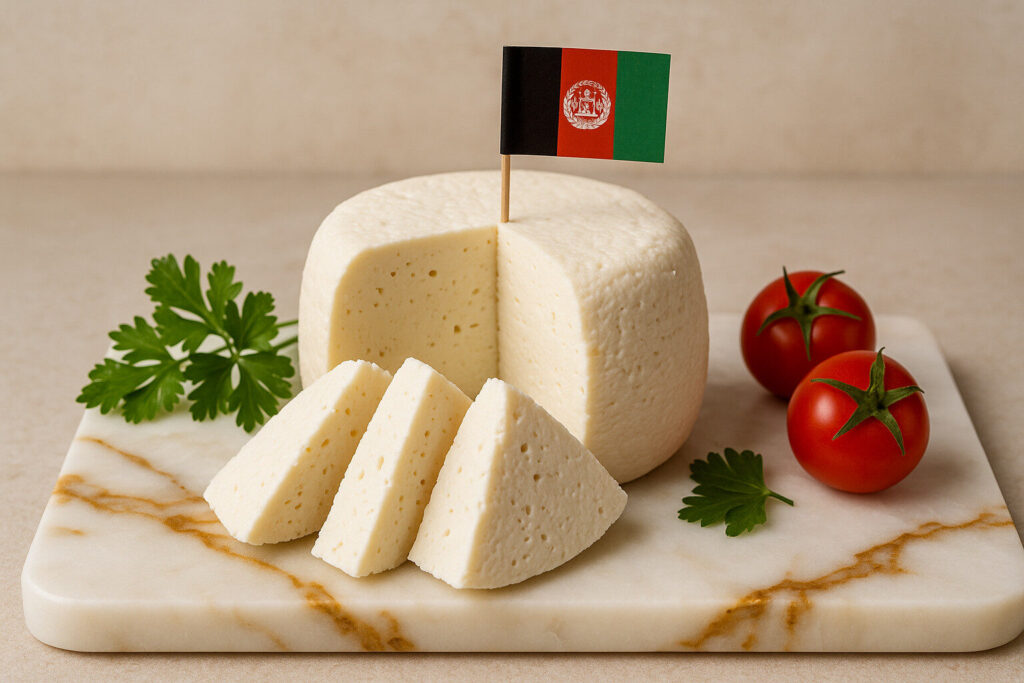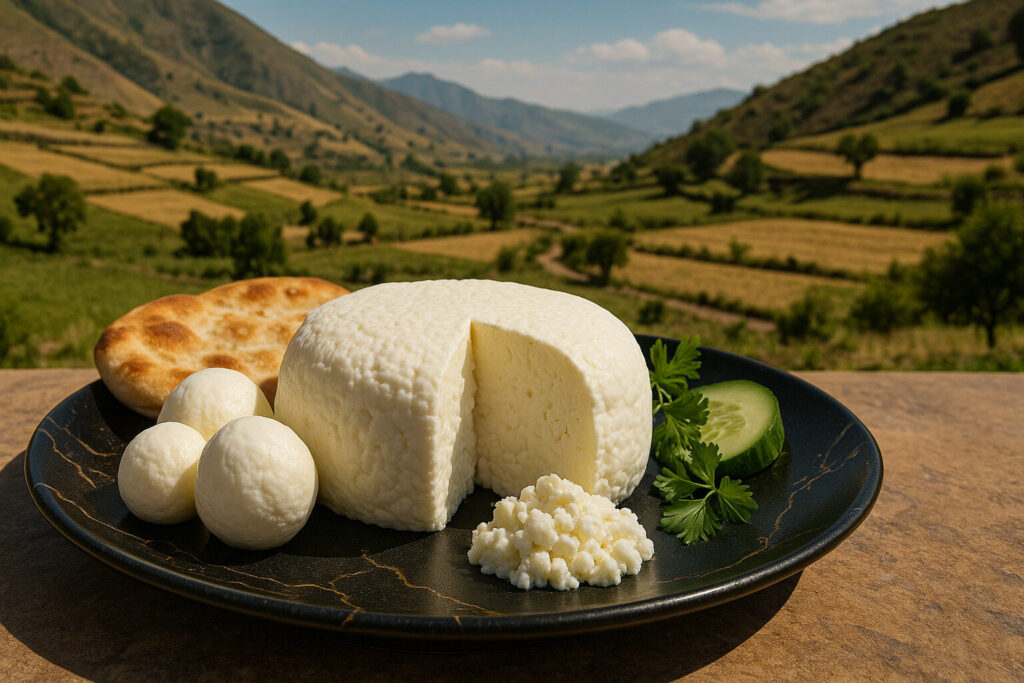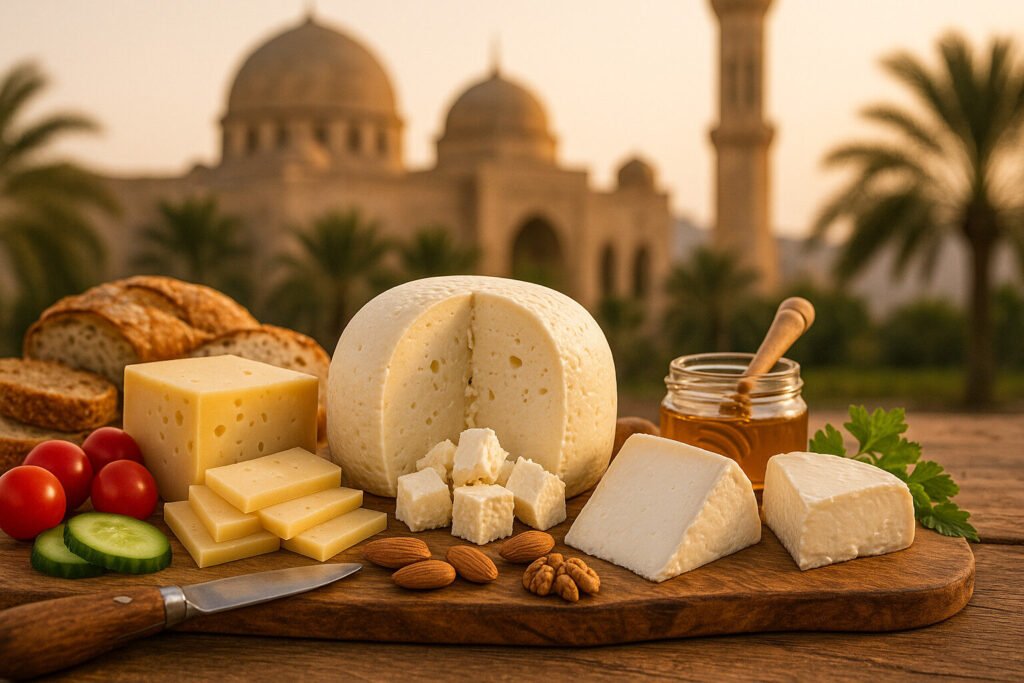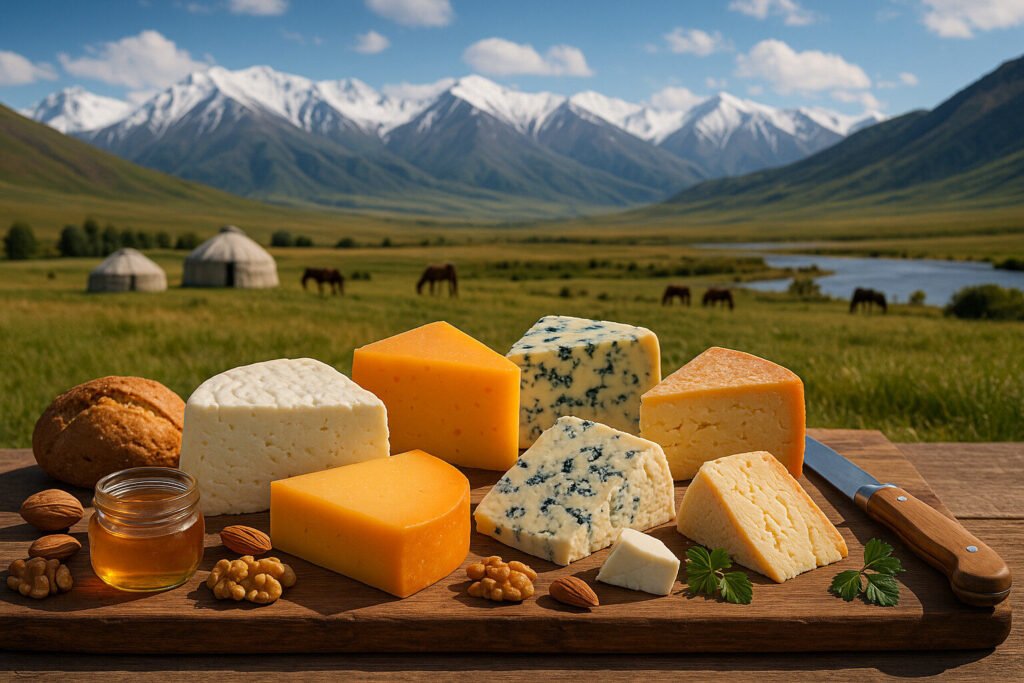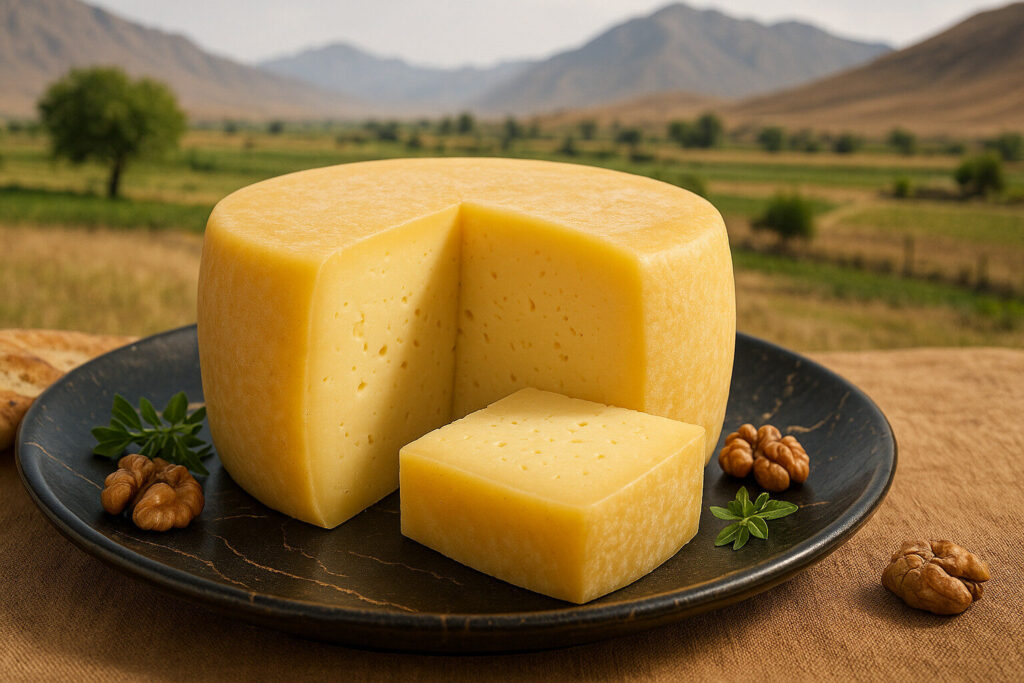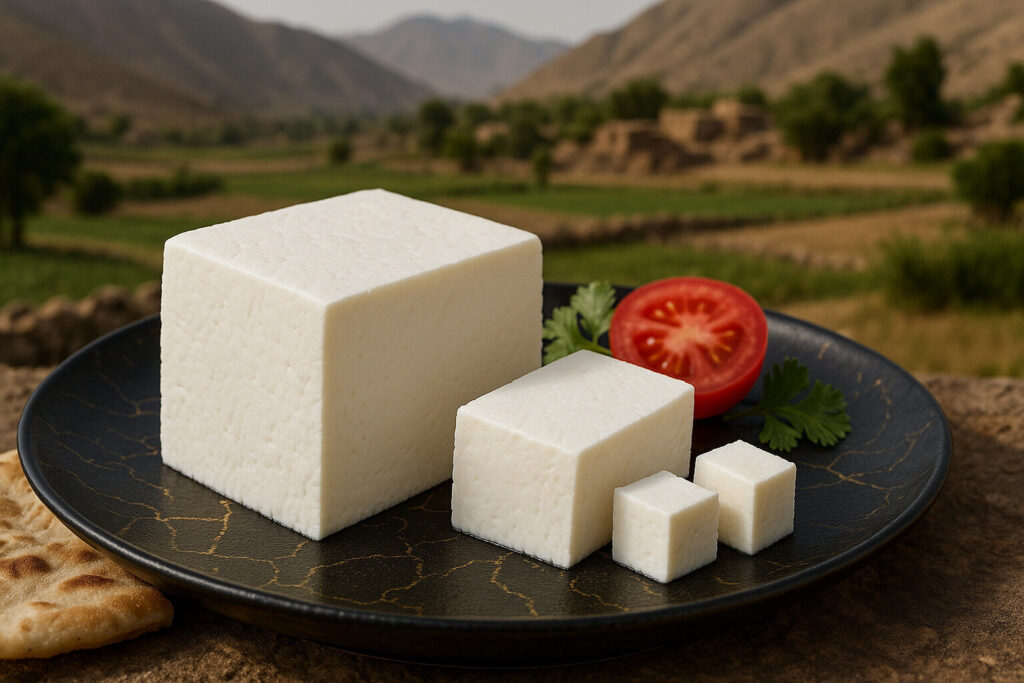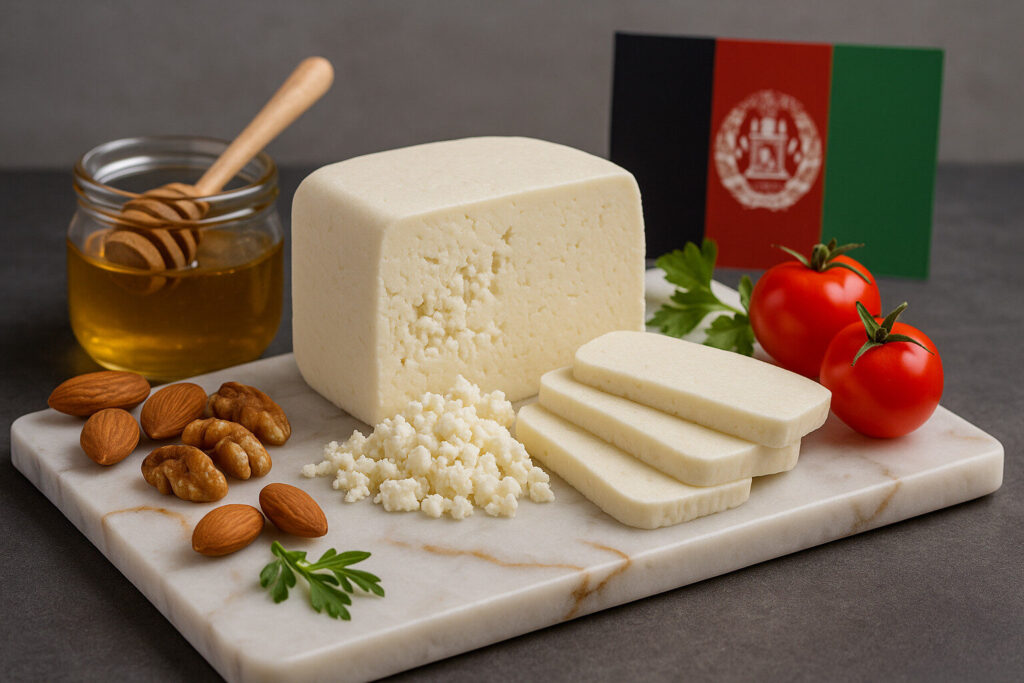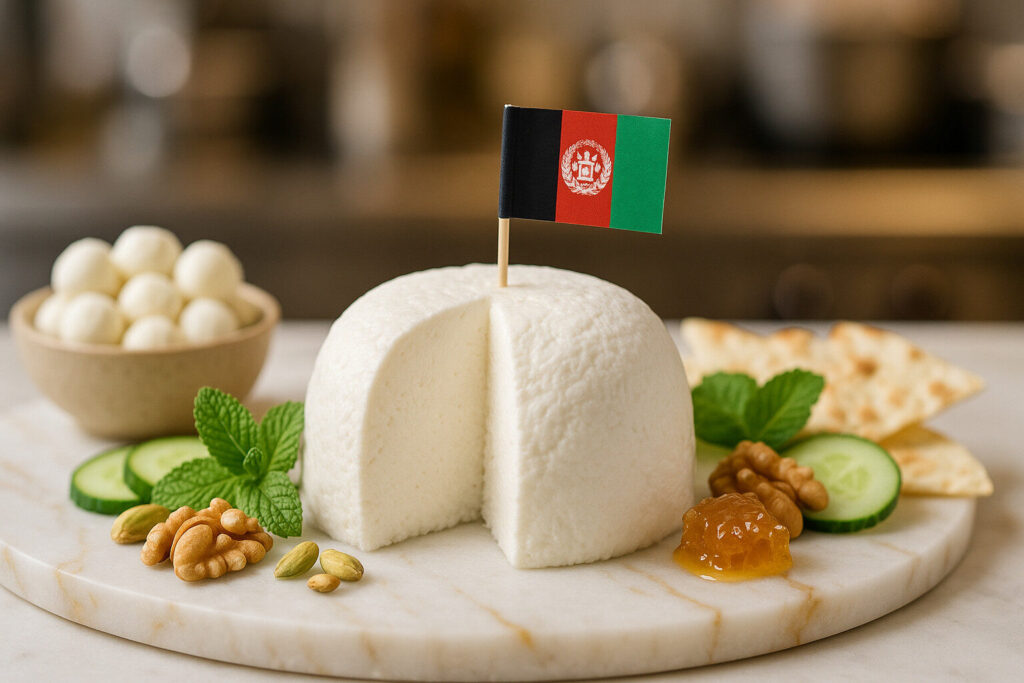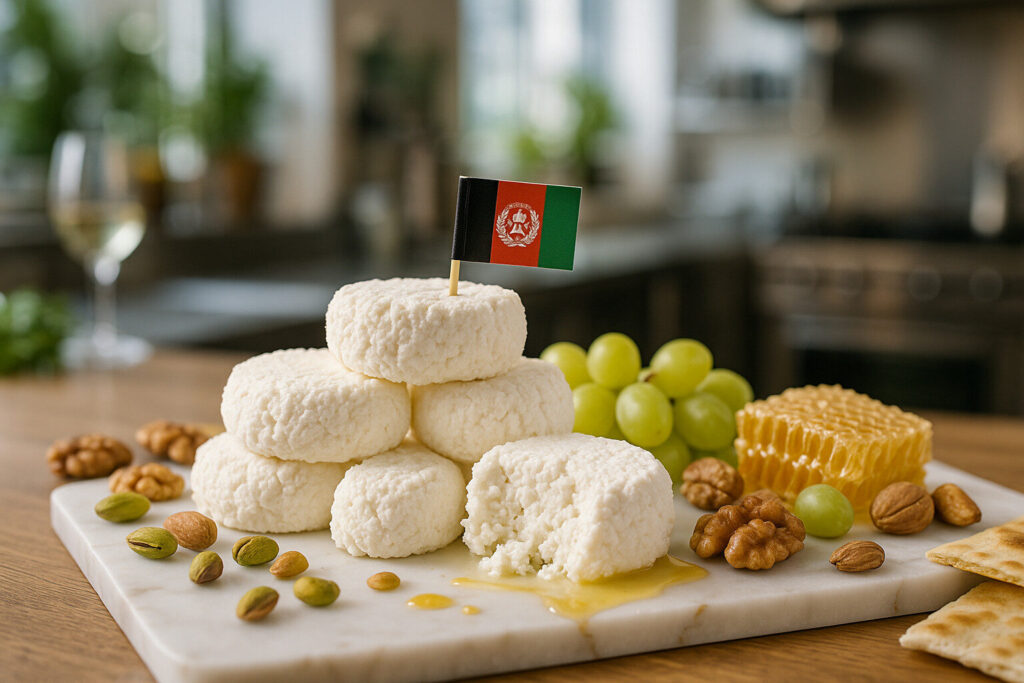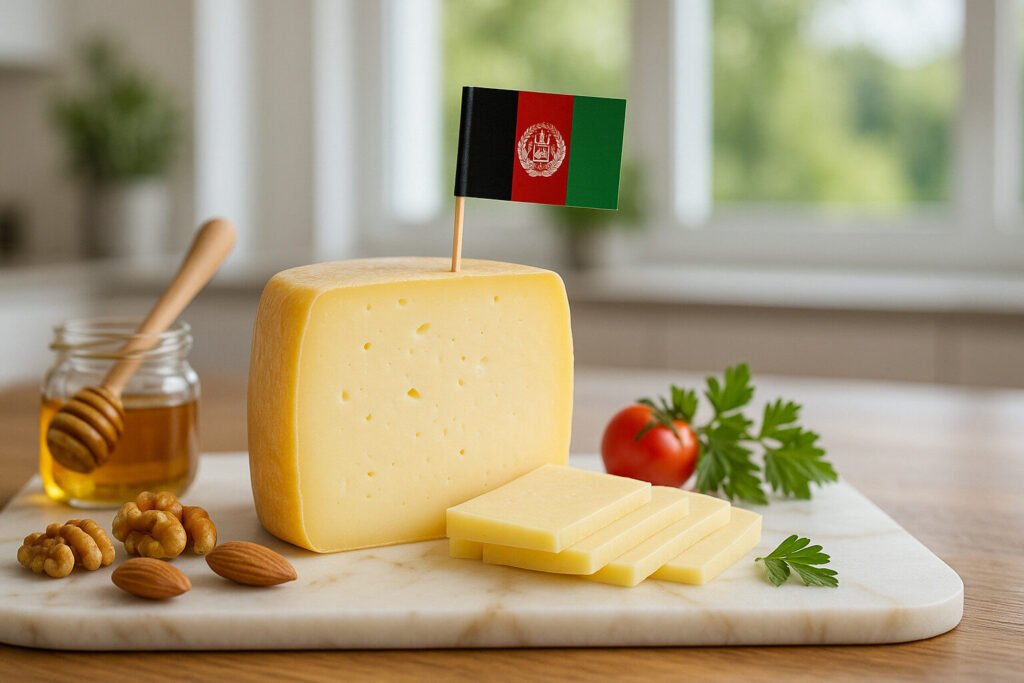Cheese Of Afghanistan
Definition and Scope
Afghanistan’s cheese tradition centers on fresh, brined varieties adapted to its climate and pastoral economy. These cheeses are typically made from sheep or goat milk, reflecting the country’s dominant livestock. Production remains largely artisanal, with methods passed through generations in rural communities.
The primary cheese style is a white, semi-soft variety preserved in salt brine. This method ensures longevity without refrigeration in variable temperatures. Its scope is regional, with subtle variations found between different provinces and ethnic groups.
Production Techniques
Traditional Afghan cheese begins with raw milk, which is gently heated before adding rennet for coagulation. The curds are hand-ladled into molds and lightly pressed to expel whey. This process results in a moist, open-textured cheese ready for brining.
Brining occurs in concentrated salt solutions, where cheeses mature for several weeks. The salt concentration controls fermentation and prevents spoilage. No artificial additives or commercial starter cultures are used in this heritage method.
Sensory Profile
Afghan cheese presents a milky, mildly tangy flavor with noticeable saltiness from the brine preservation. Its aroma is clean and lactic, reminiscent of cultured dairy. The texture is springy and moist, often described as similar to feta or other fresh brined cheeses.
The paste is pure white with no rind development due to the brining process. It crumbles easily when pressed but can be sliced when fresh. The flavor intensity increases with extended brining time, developing more pronounced salty and acidic notes.
Culinary Applications
This cheese is primarily consumed as a table cheese, served with flatbreads like naan or lavash. It commonly appears at breakfast alongside tea, walnuts, and seasonal fruits. The salty profile makes it a natural pairing with sweet melons and grapes.
In cooked applications, it is crumbled over salads or incorporated into filled pastries. It maintains its structure when baked, making it suitable for savory pies and stuffed breads. The cheese is rarely melted into sauces due to its brined nature.
Regional Variations
Northern provinces produce smaller, drier versions using predominantly sheep milk. These cheeses often incorporate local herbs like wild thyme during the brining process. The resulting product has a more complex, aromatic quality than basic varieties.
Southern regions near Kandahar create a slightly sharper version with longer brining times. Some mountain communities smoke their cheeses lightly over wood fires for preservation. These regional differences reflect local tastes and available resources across Afghanistan’s diverse geography.

